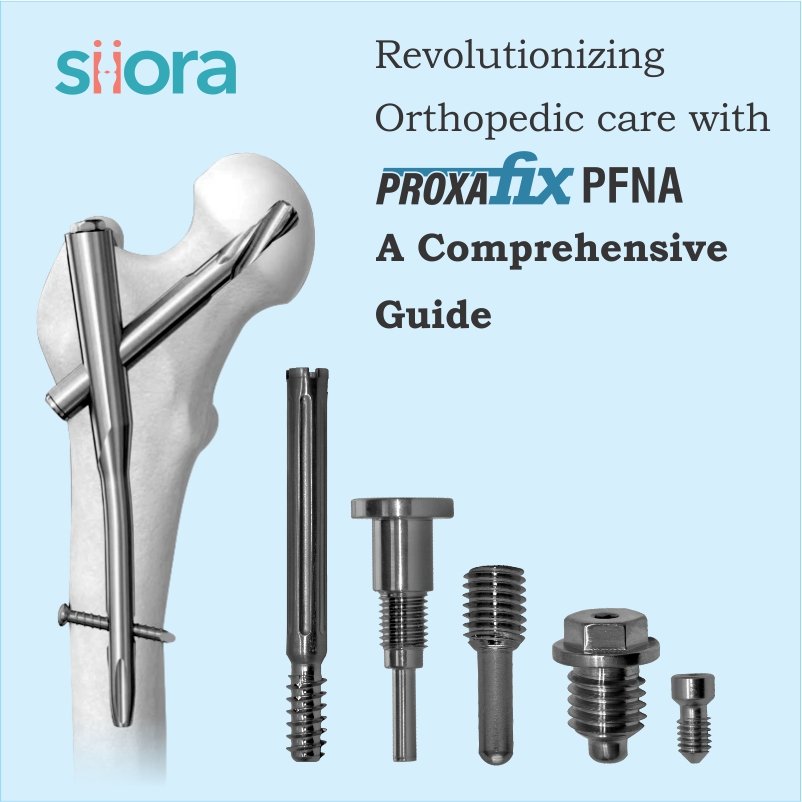Orthopedic injuries are common and if we’re not wrong, then almost everyone experiences the same at least once in their lifetime. Out of all, bone fractures are the most common. People of all age groups experience fractures and the severity of the same depends on the cause. In this post, we will see bone fractures along with their types and treatment.
What Are Bone Fractures?
In layman’s terms, a bone fracture is a break in the bone. “Fracture” is a medical term for a broken bone. So, we must say that a bone fracture and a broken bone are the same terms that people use interchangeably.
Any bone in our body can break and there are multiple causes for the same. A fracture can occur because of traumatic and non-traumatic events. The exact cause of the fracture defines its severity, and this will decide the type of treatment required and how much time will it take for the fracture to heal. There are different types of bone fractures and they are classified based on the pattern of the break, location, and severity. Broadly, fractures can be classified as displaced, non-displaced, closed, and open. Let us see it in detail.

What Are the Different Types of Bone Fractures?
A broad classification of fractures includes:
- Displaced Fractures
- Non-Displaced Fractures
- Open Fractures
- Closed Fractures
Irrespective of the location and the pattern of break, all fractures are categorized based on the above-mentioned types before deciding their treatment and management. Let us have a detailed look at these fracture types:
Displaced Fractures
A displaced fracture is a condition in which the bone breaks and the broken bone fragments significantly move out of their original position. In other words, a displaced fracture is when the broken bone displaces from its natural alignment. Such fractures often occur because of high-energy or high-intensity trauma. In displaced fractures, a gap forms around the fracture. Such fractures often need surgical intervention and orthopedic implants are applied to hold broken bone fragments in place.
The process of bringing fractured bone pieces back to their natural alignment is called reduction.
Non-Displaced Fractures
A non-displaced fracture is when the bone breaks but stays in its natural alignment. This means, no displacement of the broken bone is there. In other words, non-displaced fractures are those in which minimal to no displacement of bone fragments is there. These fractures occur because of low-intensity trauma like falling from a height or contact sports injuries. No surgery is required for the treatment of non-displaced fractures in most cases.
Closed Fractures
A closed fracture is a condition in which the bone breaks and remains beneath the skin. They are the commonest types of fractures that people experience across the globe. A closed fracture can be displaced or non-displaced. Imaging tests, especially an x-ray examination is required to identify the severity and the type of closed fractures.
Open Fractures
Open fractures are when the bone breaks and comes out of the skin. In other words, open fractures are when there is direct contact between the fractured bone and the external environment. These types of fractures come under medical emergencies. This is because open fractures result in excessive blood loss and if the medical assessment is delayed, severe complications may occur. When compared to others, open fractures take a much longer time to heal. If a delay in the treatment of the open fracture is there, the chances of infections increase.
What Are the Causes of Bone Fractures?
Fractures can occur because of both traumatic and non-traumatic events. Traumatic events are among the commonest causes of bone fractures, and they could affect people of all age groups irrespective of gender. Let us see the causes of bone fractures in detail:
TRAUMATIC CAUSES
Automobile Accidents
Most fractures occur because of car/bike accidents and the maximum cases are severe. Accidents often result in displaced fractures and when the accidents are high-energy or severe, open fractures are on the cards.
Physical Trauma
Physical trauma is when something solid and heavy hits directly to the limb. Some examples of physical trauma include gunshots or someone deliberately hitting you with an object.
Overuse
Fractures also occur when someone overuses a particular bone. This often occurs in athletes as they perform repetitive movements while playing. Overusing a bone puts it under stress and over time, a fracture occurs. Such fractures are stress fractures.
Contact Sports Injuries
Athletes engaged in contact sports injuries are also prone to fractures. This could occur due to falls or awkward bending or twisting of a limb while playing. Besides this, a collision between players can also result in a bone fracture.
NON-TRAUMATIC CAUSES
Osteoporosis
Osteoporosis is a condition in which bones become weak and brittle. People suffering from the condition can get fractures without any significant cause. In osteoporosis, people can experience a fracture while walking, jumping, or awkward placement of the foot while doing any other activities. Osteoporosis is a silent condition, and it usually shows no specific symptoms. Hence, when the diagnosis occurs, the condition is in the advanced stage.
Regular bone density tests are necessary for the timely diagnosis of osteoporosis.
Smoking
If you are wondering how smoking causes fractures, then we must tell you that there is a direct relation. Cigarettes contain tobacco and it reduces the blood supply to the bones, as a result, the much-needed oxygen and other nutrients that the bone needs becomes less. Not only this, but nicotine in cigarettes also makes the production of bone-forming cells slow. Above all, studies have also found that people who smoke have a reduced ability to absorb dietary calcium. All these factors contribute to increasing the risk of fractures in smokers. Smoking also increases the chances of osteoporosis.
Aging
The natural cause of fractures is aging. With age, our bones and joints become weak due to age-related wear & tear. This makes the elderly prone to fractures easily. Joint problems are more common in the elderly.
Occupational Activities
Some people experience fractures because of the daily stress that they have to bear at their jobs. People working as laborers are at high risk for such types of injuries. Stress fractures are also common in musicians who play a specific type of instrument.
Lazy Lifestyle
How can we ignore a sedentary lifestyle? It is the commonest cause of fractures in millennials and generation Z. Sedentary lifestyle is when minimal to no physical activity is there and with time, bones start to become weak. This is because physical activity is important for new bone cells to grow and when it is not optimum, the risk of osteoporosis increases.
Most people who love a sedentary lifestyle are obese and obesity is the major cause of orthopedic problems like arthritis, osteoporosis, and stress fractures.
What is the Diagnosis for Bone Fractures?
The diagnosis of fractures needs a thorough physical examination. Here, the orthopedic specialist will closely examine the injured area and look for several signs. The focus of the healthcare service provider will be on examining any open wounds, swelling, bruising, and tenderness. Besides this, the patient will be asked to move the injured area to closely monitor the range of motion. This also helps the orthopedic specialist identify the severity of the injury. If the patient is unable to move the injury site, this means the condition is severe and seeks immediate medical attention.
If the suspected fracture is in the leg, hip, or knee, the orthopedic specialist will ask the patient to walk or flex/straighten the leg. This gives the idea about the severity of the condition. However, imaging tests can only confirm the exact location, pattern, and severity of the fracture.
Imaging Tests for the Diagnosis of Bone Fractures
X-ray Examination
X-ray is the basic test for the diagnose of almost all types of fractures. It produces clear pictures of bones and depicts where the fracture is along with the pattern.
Magnetic Resonance Imaging (MRI)
MRI produces better images of injured bone(s) along with the surrounding soft tissues. This test helps the orthopedic specialist identify the injuries to the soft tissues. If there is an injury in the cartilage and/or ligaments, an MRI examination can detect that.
Computed Tomography (CT) Scan
CT scan produces better pictures of bones and surrounding tissues than an x-ray. Thus, if x-ray reports are not clear or the orthopedic specialist cannot come to a conclusion, he will order a CT scan.
Bone Scan
Sometimes, the healthcare service provider orders a bone scan when an x-ray examination fails to detect the fracture. For some fractures, a bone scan is more helpful than other imaging tests.
What is the Treatment for Bone Fractures?
The treatment of bone fractures depends on how severe the condition is along with the age and medical status of the patient. Both surgical and non-surgical treatments are there for fractures. Let us see it in detail.
Non-Surgical Treatment
Immobilization
Immobilization is an option when the fracture is mild and bone fragments do not move out of the alignment. To immobilize the fracture, the orthopedic specialist will apply a cast or a splint. If we talk about the splint, it lasts for around 3-5 weeks. While on the other hand, a cast stays for around 6-8 weeks.
With immobilization, follow-up x-rays are must to confirm whether bones are healing correctly.
Closed Reduction
A closed reduction is an option when the fractured bone fragments move from their true alignment but are not significant enough to require surgery. In such cases, the orthopedic specialist will physically realign the bone fragments back to their true anatomical positions. This process is carried out under anesthesia because it is painful and requires force.
A cast or a splint is applied after closed reduction to allow the healing of the bone.

Surgical Treatment
Surgery is an option when the fracture is severe, and the bone fragments have significantly moved out of alignment. In other words, we can say surgery is a must for severely displaced fractures.
Besides this, open fractures also require surgical intervention as they come under medical emergencies. Now, different types of surgeries are there depending on the severity and the location of the fracture. Let us have a look:
Internal Fixation
Also known as open reduction and internal fixation (ORIF), this involves the surgical realignment of broken bone fragments. During ORIF, the orthopedic surgeon will use trauma implants to stabilize the fractured bone and allow it to heal properly. After internal fixation, the patient needs to follow some post-op guidelines to ensure better healing. Orthopedic implants required for internal fixation include:
- Rods
- Plates and Screws
- Pins and Wires
Sometimes, the implants are removed after the fracture heals completely whereas, some remain forever.
External Fixation
External fixation is required when internal fixation is not feasible, or the fracture is multi-fragmented. In certain cases, open fractures also need external fixation. Here, the orthopedic surgeon will put screws into the fractured bone and attach them to an external frame that remains outside the body.
External fixators are also used for the temporary fixation of fracture until it becomes suitable for internal fixation.
Arthroplasty
Arthroplasty is often performed for joint fractures, especially shoulder, elbow, or knee to replace the joint with an artificial one. The artificial joint is made of metal or non-metal or a combination of both.
Bone Grafting
When the fracture is too severe or the healing is not taking place, bone grafting is the option in such cases. During the procedure, the healthcare service provider will place a bone graft in the gap to rejoin the fracture and provide a platform for new bone growth to take place.
A graft can be taken from the patient’s body or a donor.
- How Long it Will Take for the recovery after a bone fracture?
- Well, there is no defined period of recovery after the fracture as it depends on certain factors:
- What is the cause of the fracture?
- How severe the fracture is?
- How is the fracture treated?
- Any other injuries accompanying the fracture
- Age and medical status of the patient
All these factors play a vital role in deciding how long it will take for the healing to occur. Besides these, physical therapy is also important in ensuring a faster and better recovery.
For a CE-certified range of orthopedic implants and instruments, contact Siora Surgicals Pvt. Ltd., a renowned trauma implant manufacturer in India. The company has experience of over 3 decades and has served clients in over 40 countries. Siora is currently serving around 130 national and international distributors and orthopedic surgeons. It is also a trustworthy OEM/contract manufacturing service provider across the globe.








